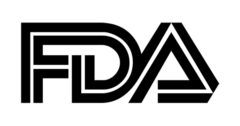
Last month, FDA launched a Biocompatibility Assessment Resource Center with the goal of explaining terms and concepts important for the evaluation of biocompatibility of medical devices.
According to FDA, the resource center is purposed with clarifying the regulations relating to ISO 10993-1, and not replacing them. The Agency recommends that companies read Biocompatibility Guidance on Use of ISO 10993-1 before following the step-by-step instructions posted at their new assessment resource center.
What does FDA’s New Biocompatibility Resource Guide offer?
The resource center comprises four steps.
Step 1: Compatibility Basics
This section of the guide speaks to issues such as when biocompatibility info is needed from the agency, what and how FDA assesses and evaluates biocompatibility, and which specific biocompatibility factors are of interest to FDA. In addition, a glossary of applicable terms is included in this section.
Step 2: Evaluation Endpoints
In the second step, Biological endpoints tables are offered by device category and contact duration period. The endpoints tables are provided for use in evaluations.
Step 3: Test Articles
Step 3 provides resources aimed at documenting how a test article compares to a proposed medical device. Information includes component documentation, device documentation, new processing/sterilization changes and formulation changes.
Step 4: Test Report
In the guide’s final section, you’ll find guidance on testing information that should be included in submissions to FDA. Links to further resources are also provided here.
At the end of the guide, information is provided on sharing general and device and/or submission-specific biocompatibility questions with FDA. The Agency also advises to ”Refer to applicable device-specific guidance documents and Class II Special Controls Documents for any relevant, device-specific biocompatibility information.”
Biocompatibility is a topic of growing interest for FDA. In late 2020, the Agency finalized guidance on use of ISO 10993-1 and included measures on risk management processes. The new resource guide is an additional measure that emphasizes that orthopedic companies need to better understand and characterize the materials, processes and risks associated with taking a device to market.
PM
Patrick McGuire is a BONEZONE Contributor.




